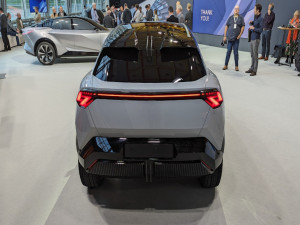The automotive industry is on the cusp of a significant transformation as electric vehicles (EVs) are poised to dominate the market by 2026. Advances in battery technology, expanding charging infrastructure, and increasing consumer demand for sustainable transportation are key drivers propelling this shift. By 2026, EVs are expected to become more affordable, efficient, and accessible than ever before.
One of the most notable trends leading into 2026 is the substantial improvement in battery performance. Lithium-ion batteries continue to evolve, offering higher energy density, faster charging times, and longer lifespans. Additionally, alternative battery chemistries such as solid-state batteries are nearing commercial viability. These innovations promise to extend driving ranges significantly and reduce charging durations, making EV ownership more convenient and practical for a wider audience.
Charging infrastructure is also set to expand rapidly by 2026. Governments and private companies worldwide are investing heavily in fast-charging networks, aiming to minimize range anxiety—a common concern among potential EV buyers. Ultra-fast chargers capable of delivering significant charge within minutes will become increasingly commonplace along highways and urban centers. This enhanced infrastructure will facilitate long-distance travel in EVs, further encouraging adoption.
Moreover, automakers are broadening their EV portfolios to appeal to diverse consumer preferences and budgets. From compact city cars to luxury SUVs and performance models, the variety of electric options available is growing swiftly. This diversification helps address different market segments while accelerating the replacement of internal combustion engine vehicles with cleaner alternatives.
Policy frameworks play a crucial role in shaping the EV landscape for 2026. Many countries have introduced stricter emissions regulations and incentives such as tax credits, rebates, and subsidies aimed at promoting electric vehicle purchases. These measures not only lower upfront costs but also signal a clear commitment toward reducing carbon emissions and combating climate change.
By 2026, it is anticipated that EVs will represent a significant portion of new vehicle sales globally. Analysts predict that improvements in technology, enhanced infrastructure, supportive policies, and shifting consumer attitudes will collectively drive widespread adoption. The transition to electric mobility marks an essential step toward a sustainable future, reducing dependence on fossil fuels while fostering innovation in transportation.
In summary, the landscape of electric vehicles in 2026 promises greater accessibility, improved performance, and broader acceptance. As automakers and governments continue to collaborate on advancements and incentives, consumers can expect an increasingly seamless experience with EVs as a mainstream choice for everyday driving.

